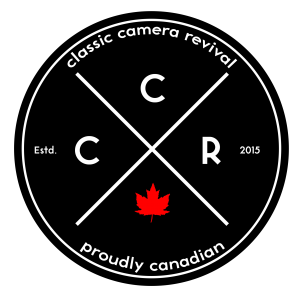After a long delay, we’re continuing our drive into the professional model Nikon SLRs. The third version, or Nikon F3, came out in 1981 and marked a significant shift in design and internals. The Nikon F3 relied on battery power, went with a sleek new all-black design and had a proper industrial design to back up the change!
The 1970s saw the introduction of semi-automation in SLRs along with the inclusion of electronic features. Nikon did introduce semi-automatic (aperture priority) exposure with the Nikkormat EL, EL2 and FE cameras. But it was stuck to trusted mechanical and manual exposure in their professional model, the Nikon F2. But even with the F2, the need for some automation became apparent. In 1973 with the release of the DP-2 metering head came a new accessory, the EE Aperture Control Attachment DS-1. The DS-1 turned the F2S into the Shutter Priority Semi-Automatic Camera. Nikon released an updated version in 1976, the DS-2, with the introduction of the DP-2 metering prism (F2SB). The final version, the DS-12, came out in 1977 and was paired with the DP-12 (F2AS) metering prism. But already, by the mid-1970s, Nikon had started the design work on a follow-up camera to the F2. The earliest known prototype came in 1974 and maintained much of the same look as the Nikon F2; you could sit the prototype next to an F2S, and it would be hard to tell the difference. The later 1977 prototype closely resembled the newly released Nikon FM/FE chassis. It maintained the slip-on hot-shoe with a low prism and small form factor.
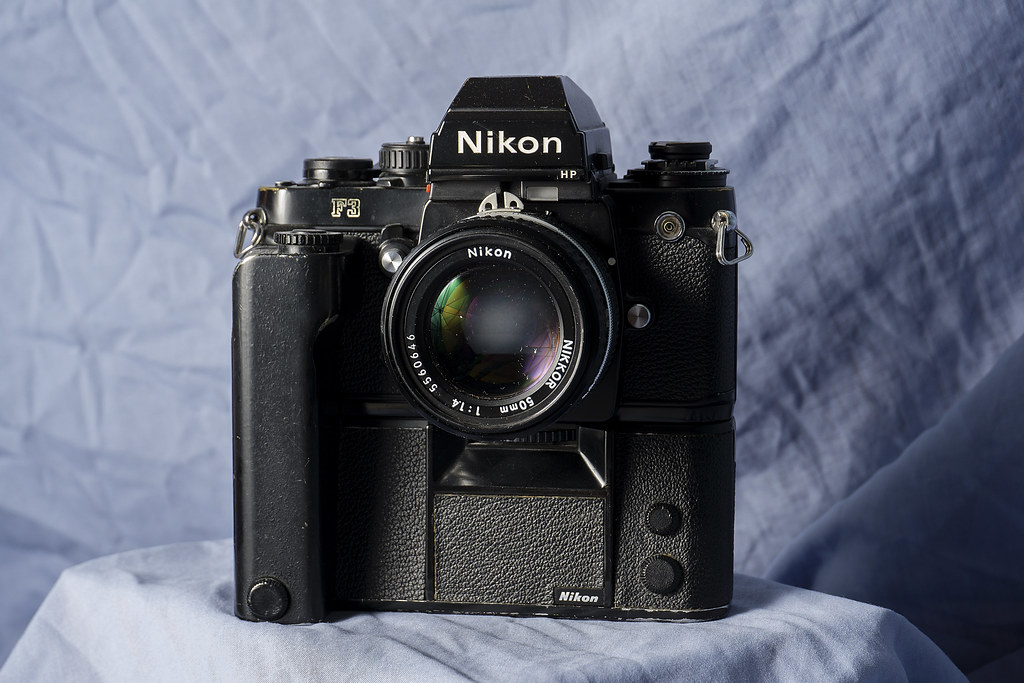
The most significant change to the look of the Nikon F3 came when Nikon realised that while they had the know-how to build good cameras, they lacked the skills needed to design a good camera. Specifically, a camera that looked good. For this, Nikon brought onboard noted industrial designer Giorgetto Giugiaro. The key for Nikon was the movement of the light sensor from the prism to the camera body and switching it to an 80/20 spread on the centre-weighted metering system. The movement saw a need to place a series of semi-silvered sections on the primary mirror and a second mirror for highly accurate metering. It allowed for near 100% coverage on the prism finder. It also allowed all the finders to take advantage of the TTL metering, even the waist-level finder. Nikon gave the F3 little fanfare on its 1980 release and saw immediate pushback as many did not like the fact that the camera needed to use batteries to function fully. But even Nikon thought of that and provided the MD-4 motor drive that could not only power itself and its blistering four frames-per-second burst mode but also the F3. The original finder proved difficult for those wearing glasses, so in 1983 Nikon released the DE-3 or “High-Point” finder, which turned out to be the favourite among all who used the Nikon F3. Like the F and F2, the F3 proved to have a great deal of modification with a wide range of prism and other finders, the MD-4 drive, focusing screens and yes, even a 250-shot magazine that worked seamlessly with the MD-4.
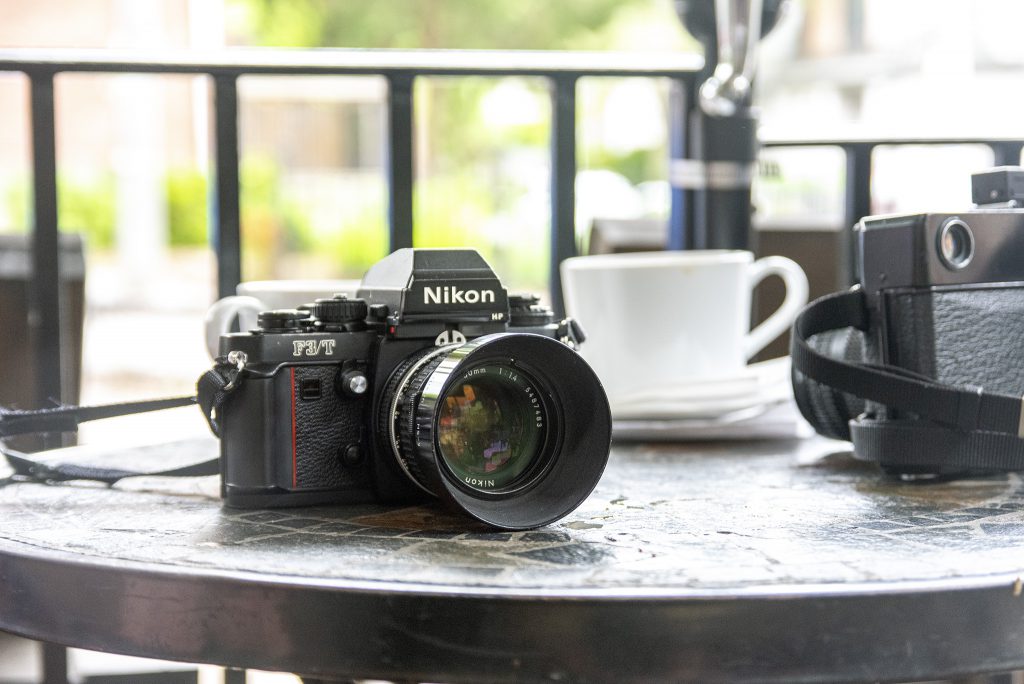
Nikon produced several special editions, including the Titanium framed F3/T, which formed the base for the F3P for press photographers that included a standard hot-shoe a back that kept the film tail from feeding back in during power-rewind, and weather sealing. However, it lost the self-timer and eye-finder shade. An F3H used a special pellicle mirror and MD-4H to increase the burst mode to a blistering 12 frames-per-second. But Nikon did not stop there; a specially modified F3 was used in filming the minecart chase in Indiana Jones and the Temple of Doom. NASA and the US Military used modified F3 cameras. But Nikon didn’t stop there, the F3 proved a capable platform, and by the mid-80s, many major camera makers were starting to develop autofocus. Nikon’s approach took a more cautious look. The Nikon F3AF came with only two lenses, and while there were plans for more, only an 80mm and 200mm lens was produced, and an oversized prism finder made the camera bulky. Nikon passed this off with autofocus only being used for sports photographers. Kodak also took the F3, using the electronic contacts and robust design and construction to build one of the world’s first digital SLRs, the Kodak DCS 100. These could allow the camera to properly interface with the CCD image sensor and the massive Digital Storage Unit (DSU) that had to be carried on the shoulder that held the image’s processor and storage. Storage was a traditional 200MB SCSI drive with space to store 156 RAW images or 600 JPG compression. Other options for the DSU included a keyboard to caption images, a modem to transmit the images to the home office, and even a JPG compression board. Released in 1991, the DCS 100, as its name was retconned to later, sold for 20,000$ for the base model. Overall, 987 units were sold. But the DCS 100 was not exactly user friendly and not easily used in the field with the DSU over your shoulder or in a backpack.




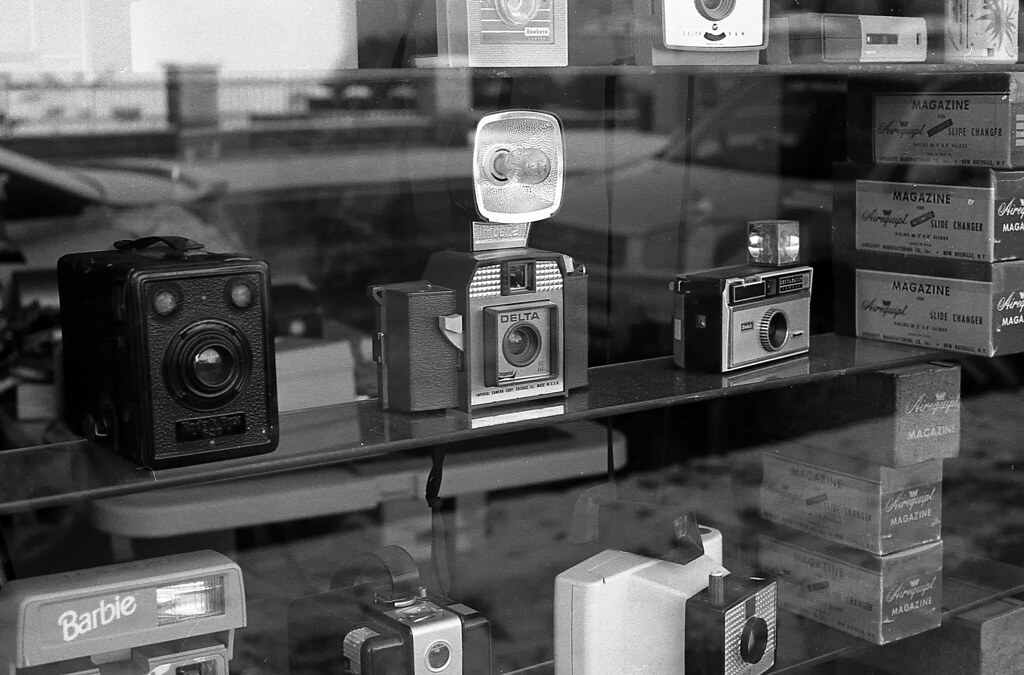
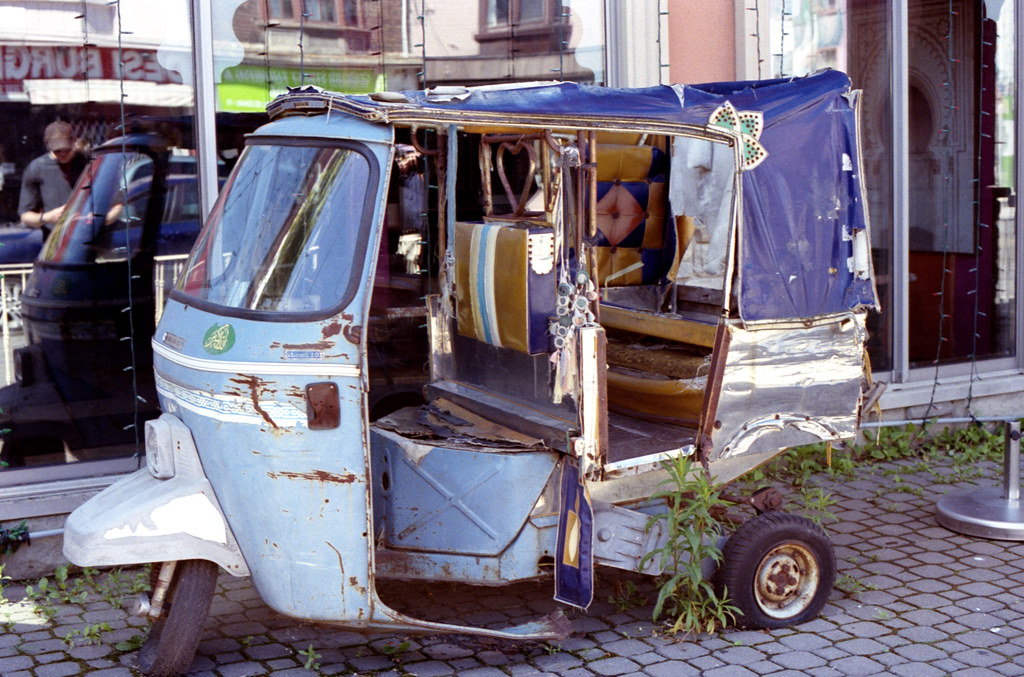
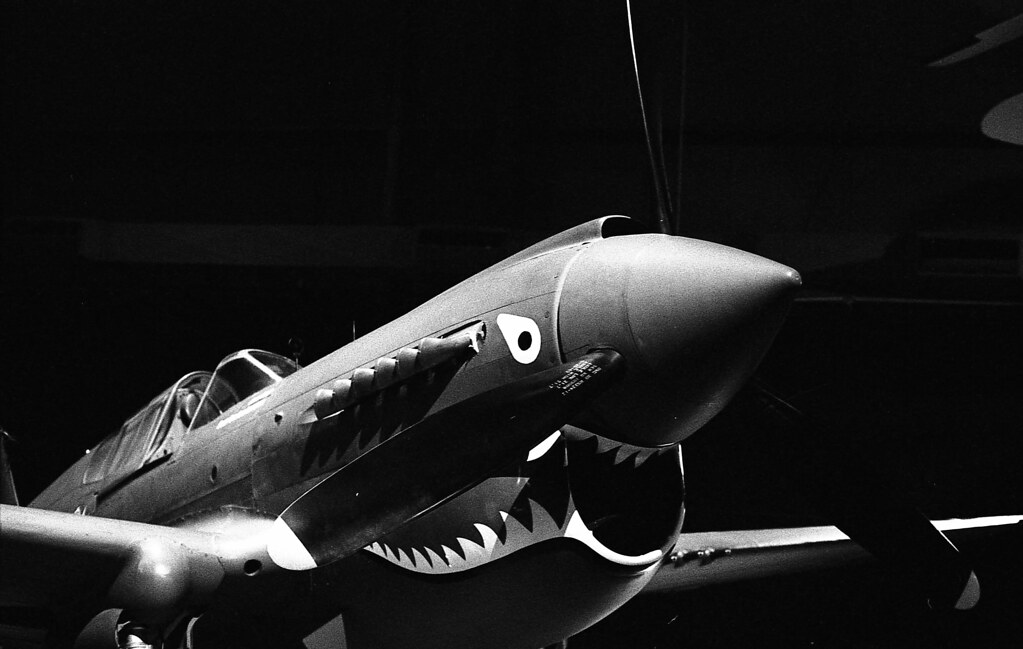

Want a subscription to SilverGrain Classics and are a fan of Classic Camera Revival? Visit their shop online and buy a magazine or a subscription? Looking for a good spot to get your gear and material fix check out Burlington Camera (Burlington, ON), Downtown Camera (Toronto, ON), Film Plus (Toronto, ON), Belle Arte Camera (Hamilton, ON), Pond’s FotoSource (Guleph, ON), Foto Art Camera (Owen Sound, ON). In Quebec, Photo Service (Montreal, QC) and Studio Argentique (Montreal, QC), Out West there’s Kerrisdale Cameras (BC), The Camera Store (Calgary, AB) and Beau Photo Supply (Vancouver, BC). Additionally you can order online at Argentix (Quebec), buyfilm.ca (Ontario), the Film Photography Project or Freestyle Photographic. Looking for development options, check out these labs that have our support, Boréalis Photo Lab, Old School Photo Lab, The Darkroom, and Film Rescue International.
Also you can connect with us through email: classiccamerarevivial[at]gmail[dot]com or by Facebook, we’re at Classic Camera Revival, Twitter @ccamerarevival, and Instagram (@classiccamerarevival)!
